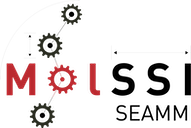control_parameters_step package#
Submodules#
control_parameters_step.control_parameters module#
Non-graphical part of the Control Parameters step in a SEAMM flowchart
The Control Parameters step allows the person creating the flowchart to specify an arbitrary number of parameters that can be set when the flowchart is run, typically by command-line arguments. Parameters may be positional or optional, in which case they indicated by a ‘flag’ on the command line, e.g. –n 10.
By default, these parameters will not replace a current value if it already exists, though this can be changed. This allows embedding flowcharts within other flowcharts without overriding parameters, but ensuring that all parameters are set.
Parameters have a specified type:
str A text string
int An integer
float A floating point number
bool A boolean value: 1/0, True/False, Yes/No
Typically parameters have one value associated with them; however, any parameter may have a specified or variable number of values, including none. The possibilities are:
a single value This is the default
N values Where N is an integer >= 1
an optional value If not present, the default is used
zero or more values
one or more values
An optional parameter need not have a default, in which case if it does not appear on the command-line it is not set in the SEAMM environment.
Rather than allow any value of the correct type, an option can be restricted to a list of choices. For example, a convergence citerion might be ‘normal’, ‘tight’ or ‘loose’ or an MPn quantum calculation might allow n to be 2, 3, or 4.
In addition to command-line arguments, this module supports environment variables and a control file with a simple format of key = value. If a parameter appears in multiple places, the precedence is command-line > environment variable > file > default.
Positional parameters must appear in the right place on the command line. Optional parameters are given with a flag of form ‘–<name>’, e.g. ‘–P’ or ‘–nsteps’.
The environment variable by default is SEAMM_<name>, in all capital letters, e.g. SEAMM_P or SEAMM_nsteps.
In a control file, the variable name is used as-is followed by the value, or = value or : value. Or it can look like a command line argument:
P 1.0
P=1.0
P: 10
--P 50
nsteps 50
nsteps = 50
nsteps:50
--nsteps 50
Positional arguments cannot be put in a control file. If the value is a list, encase it in square brackets:
pressures = [1.0, 2.0, 5.0, 10.0]
Internally the parameter definitions are stored in a dictionary with the parameter name as key and the value is itself a dictionary labeled by the item in the definition, e.g. ‘name’, ‘default’, and ‘nargs’:
"T": {
"type": "float",
"nargs": "a single value",
"optional": "Yes",
"default": "298.15",
"choices": "[]",
"overwrite": "No",
"help": "The temperature"
},
- class control_parameters_step.control_parameters.ControlParameters(flowchart=None, title='Parameters', extension=None, logger=<Logger control_parameters_step.control_parameters (WARNING)>)[source]#
Bases:
NodeThe non-graphical part of a Control Parameters step in a flowchart.
- options#
It contains a two item tuple containing the populated namespace and the list of remaining argument strings.
- Type:
tuple
- subflowchart#
A SEAMM Flowchart object that represents a subflowchart, if needed.
- Type:
seamm.Flowchart
- parameters#
The control parameters for Control Parameters.
See also
TkControlParameters,ControlParameters,ControlParametersParameters- description_text(P=None)[source]#
Create the text description of what this step will do. The dictionary of control values is passed in as P so that the code can test values, etc.
- Parameters:
P (dict) – An optional dictionary of the current values of the control parameters.
- Returns:
A description of the current step.
- Return type:
str
- property git_revision#
The git version of this module.
- run()[source]#
Run a Control Parameters step.
- Parameters:
None
- Returns:
The next node object in the flowchart.
- Return type:
seamm.Node
- property version#
The semantic version of this module.
control_parameters_step.control_parameters_parameters module#
Control parameters for the Control Parameters step in a SEAMM flowchart
- class control_parameters_step.control_parameters_parameters.ControlParametersParameters(defaults={}, data=None)[source]#
Bases:
ParametersThe control parameters for Control Parameters.
The developer will add a dictionary of Parameters to this class. The keys are parameters for the current plugin, which themselves might be dictionaries.
You need to replace the ‘time’ example below with one or more definitions of the control parameters for your plugin and application.
- Parameters:
parameters ({'kind', 'default', 'default_units', 'enumeration',)
'format_string' – A dictionary containing the parameters for the current step. Each key of the dictionary is a dictionary that contains the the following keys: kind, default, default_units, enumeration, format_string, description and help text.
description' – A dictionary containing the parameters for the current step. Each key of the dictionary is a dictionary that contains the the following keys: kind, default, default_units, enumeration, format_string, description and help text.
help_text'} – A dictionary containing the parameters for the current step. Each key of the dictionary is a dictionary that contains the the following keys: kind, default, default_units, enumeration, format_string, description and help text.
parameters['kind'] (custom) – Specifies the kind of a variable. While the ‘kind’ of a variable might be a numeric value, it may still have enumerated custom values meaningful to the user. For instance, if the parameter is a convergence criterion for an optimizer, custom values like ‘normal’, ‘precise’, etc, might be adequate. In addition, any parameter can be set to a variable of expression, indicated by having ‘$’ as the first character in the field. For example, $OPTIMIZER_CONV.
parameters['default'] ('integer' or 'float' or 'string' or 'boolean' or) – ‘enum’ The default value of the parameter, used to reset it.
parameters['default_units'] (str) – The default units, used for resetting the value.
parameters['enumeration'] (tuple) – A tuple of enumerated values.
parameters['format_string'] (str) – A format string for ‘pretty’ output.
parameters['description'] (str) – A short string used as a prompt in the GUI.
parameters['help_text'] (tuple) – A longer string to display as help for the user.
See also
ControlParameters,TkControlParameters,ControlParameters,ControlParametersParameters,Control- parameters = {'variables': {'default': {}, 'default_units': '', 'description': 'variables', 'enumeration': (), 'format_string': '', 'help_text': 'The variables to handle, with defaults, etc.', 'kind': 'dictionary'}}#
control_parameters_step.control_parameters_step module#
- class control_parameters_step.control_parameters_step.ControlParametersStep(flowchart=None, gui=None)[source]#
Bases:
objectHelper class needed for the stevedore integration.
This must provide a description() method that returns a dict containing a description of this node, and create_node() and create_tk_node() methods for creating the graphical and non-graphical nodes.
- Parameters:
my_description ({description, group, name}) – A human-readable description of this step. It can be several lines long, and needs to be clear to non-expert users. It contains the following keys: description, group, name.
my_description['description'] (tuple) – A description of the Control Parameters step. It must be clear to non-experts.
my_description['group'] (str) – Which group in the menus to put this step. If the group does not exist it will be created. Common groups are ‘Building’, ‘Calculations’, ‘Control’ and ‘Data’.
my_description['name'] (str) – The name of this step, to be displayed in the menus.
- create_node(flowchart=None, **kwargs)[source]#
Create and return the new node object.
- Parameters:
flowchart (seamm.Node) – A non-graphical SEAMM node
**kwargs (keyworded arguments) – Various keyworded arguments such as title, namespace or extension representing the title displayed in the flowchart, the namespace for the plugins of a subflowchart and the extension, respectively.
- Return type:
See also
ControlParameters
- create_tk_node(canvas=None, **kwargs)[source]#
Create and return the graphical Tk node object.
- Parameters:
canvas (tk.Canvas) – The Tk Canvas widget
**kwargs (keyworded arguments) – Various keyworded arguments such as tk_flowchart, node, x, y, w, h representing a graphical flowchart object, a non-graphical node for a step, and dimensions of the graphical node.
- Return type:
See also
TkControlParameters
- my_description = {'description': 'An interface for Control Parameters', 'group': 'Control', 'name': 'Parameters'}#
control_parameters_step.tk_control_parameters module#
The graphical part of a Control Parameters step
- class control_parameters_step.tk_control_parameters.TkControlParameters(tk_flowchart=None, node=None, canvas=None, x=None, y=None, w=200, h=50)[source]#
Bases:
TkNodeThe graphical part of a Control Parameters step in a flowchart.
- tk_flowchart#
The flowchart that we belong to.
- Type:
TkFlowchart = None
- node#
The corresponding node of the non-graphical flowchart
- Type:
Node = None
- namespace#
The namespace of the current step.
- Type:
str
- sub_tk_flowchart#
A graphical Flowchart representing a subflowchart
- Type:
TkFlowchart
- canvas#
The Tk Canvas to draw on
- Type:
tkCanvas = None
- dialog#
The Pmw dialog object
- Type:
Dialog
- x#
The x-coordinate of the center of the picture of the node
- Type:
int = None
- y#
The y-coordinate of the center of the picture of the node
- Type:
int = None
- w#
The width in pixels of the picture of the node
- Type:
int = 200
- h#
The height in pixels of the picture of the node
- Type:
int = 50
- self[widget]#
A dictionary of tk widgets built using the information contained in Control Parameters_parameters.py
- Type:
dict
See also
ControlParameters,TkControlParameters,ControlParametersParameters- create_dialog()[source]#
Create the dialog. A set of widgets will be chosen by default based on what is specified in the Control Parameters_parameters module.
- Parameters:
None
- Return type:
None
See also
- create_edit_variable_dialog()[source]#
Create a dialog for adding edit variables.
- Parameters:
None
- Return type:
None
- create_new_variable_dialog()[source]#
Create a dialog for adding new variables.
- Parameters:
None
- Return type:
None
- edit()[source]#
Present a dialog for editing the Control Parameters input
- Parameters:
None
- Return type:
None
See also
- handle_dialog(result)[source]#
Handle the closing of the edit dialog
What to do depends on the button used to close the dialog. If the user closes it by clicking the ‘x’ of the dialog window, None is returned, which we take as equivalent to cancel.
- Parameters:
result (None or str) – The value of this variable depends on what the button the user clicked.
- Return type:
None
- handle_edit_variable_dialog(name, result)[source]#
Handle the closing of the edit variable dialog
What to do depends on the button used to close the dialog. If the user closes it by clicking the ‘x’ of the dialog window, None is returned, which we take as equivalent to cancel.
- Parameters:
result (None or str) – The value of this variable depends on what the button the user clicked.
- Return type:
None
- handle_help()[source]#
Shows the help to the user when click on help button.
- Parameters:
None
- Return type:
None
- handle_new_variable_dialog(result)[source]#
Handle the closing of the new variable dialog
What to do depends on the button used to close the dialog. If the user closes it by clicking the ‘x’ of the dialog window, None is returned, which we take as equivalent to cancel.
- Parameters:
result (None or str) – The value of this variable depends on what the button the user clicked.
- Return type:
None
- reset_dialog(widget=None)[source]#
Layout the widgets in the dialog.
The widgets are chosen by default from the information in Control Parameters_parameter.
This function simply lays them out row by row with aligned labels. You may wish a more complicated layout that is controlled by values of some of the control parameters. If so, edit or override this method
- Parameters:
widget (Tk Widget = None)
- Return type:
None
See also
Module contents#
control_parameters_step A step for control parameters in SEAMM

